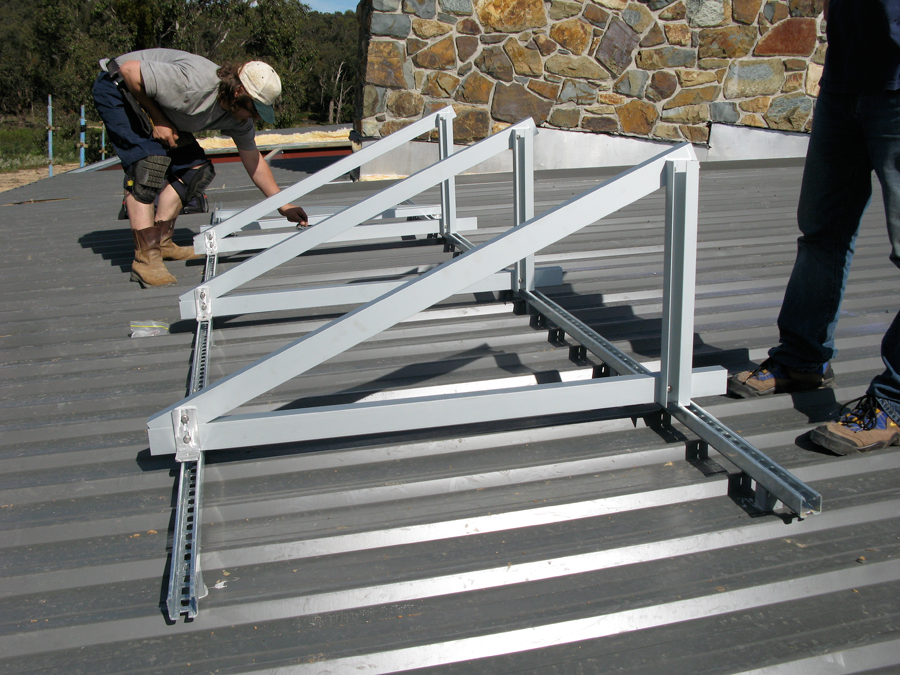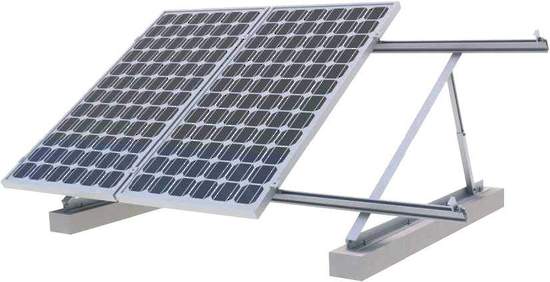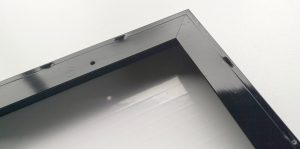Why Is A Solar Panel Frame So Important?

Solar Panel Frames are a key component in the design of a Solar Mounting System. If you plan to install a Solar Panel System on your residential property, the primary function of the mounting system will be to attach the Solar Panel Array to your rooftop.
In some instances, attaching the solar panel array to the ground will be the more feasible option, but the frame itself will remain equally important in that context too.
The solar panel frame which you use for your mounting system will have a significant and direct impact on the functionality of the actual solar panel itself.
Among the key considerations, you will need to make when deciding on the right solar panel frame to use are the ease and speed of assembly, adjustability, aesthetics, overall costs, and the environment. Making the wrong solar panel frame choices can be counterproductive and costly.
Your choices on solar panel frames hinge heavily on the benefits you hope to derive from them.
Ideally, you want to purchase and assemble a frame that is easy for you to handle, easy for you to store (when the situation demands it), and is able to resist the impact of heavy weather or storms.
Finally, does the frame make transport and installation easier, safer, and cheaper?
What Is A Solar Panel Frame?
 The Solar Panel Frame is a system of attachment points, which join the solar panel to the mounting structure. So, the primary function of the solar panel frame is to bond the two components.
The Solar Panel Frame is a system of attachment points, which join the solar panel to the mounting structure. So, the primary function of the solar panel frame is to bond the two components.
The secondary function of the solar panel frame – arguably just as important – is to protect the glass laminate structure of the solar panel.
Circumstances will vary – depending on where you live – on what your solar needs might be. That is why your solar panel framing options are not limited either.
When consulting any vendor, it will be explained to you that one could conceivably purchase a solar panel frame that needs to be screwed together.
Likewise, you could also purchase a solar panel frame that needs to be assembled with push-fit joints.
When deciding on the frame, you wish to use for your solar system, among the things you will need to account for is the potential for stress build-up. You also want to ensure long-term adhesion, preferably which outlasts the lifespan of the panel itself, and you also want UV stability to ensure the integrity of the bond.
In keeping with this theme, it is also worth mentioning that some frames available on the market will be double-walled and rigid. Alternately, you could also look to purchase a frame that is a little more flexible and thin.
Depending on your needs, either of those options could prove to be counterproductive and unnecessarily costly. Make sure you know what you need before purchasing anything.
What Are Solar Panel Frames Made Of?
 The vast majority of Solar Panel Frames are made from aluminium (aluminum in the United States). The reason an aluminium frame is such a popular option is that it accounts for the expansion and contraction ratios of the frame and the glass laminate panel. This determines the level of the stress build-up in the joint structure, and ultimately its durability and functionality.
The vast majority of Solar Panel Frames are made from aluminium (aluminum in the United States). The reason an aluminium frame is such a popular option is that it accounts for the expansion and contraction ratios of the frame and the glass laminate panel. This determines the level of the stress build-up in the joint structure, and ultimately its durability and functionality.
Something also worth taking into account when mounting a solar system on your roof is weight.
Traditional roof design came well before solar panel design, and the former was not built for the latter. However, there is a way out of this predicament because aluminium is of a low density – which makes it a lot more compelling than a steel frame option. By the way, the latter is something still available on the market but is probably more useful under different mounting and installation circumstances…not when installing a system on your roof!
Aluminium is also more flexible, and it has a higher strength to weight ratio, all the more reason to choose this option for your residential property.
Then there is also the small matter of the elements and that scary four-letter word…RUST. The corrosive resistance qualities of aluminium are well documented.
How Do You Build A Solar Panel Frame?
Before you take into account any form of construction, you need absolute clarity on the size of the solar panel array that you plan on putting together. The size of your system will determine the scale of the framing project.
An efficient way to go about this would be to measure your roof because this is the most common option in residential areas.
Once you have done that, it would then be prudent to conduct some meaningful research on standard solar panel sizes. You should then complete a calculated guess on how many of those panels you can fit onto your roof.
Then you can use a simple compass app on your phone to determine the angle of your house and establish what direction the roof faces, so you can maximise the power-saving outcomes. You need to be clear in your mind that embarking on this solar campaign is actually worth the trouble.
Once you have cleared that basic admin out of the way, you need to start installing the mounts on your roof. Sometimes, you might need somebody a little more experienced to assist you with that to help limit the damage on your roof. If you are not sure, always ask for help.
For example, in some cases, you will need to do some additional work and put new shingles on your roof. That can be an enormous undertaking, especially for a layman. When the shingles are removed, you will also be able to draw chalk lines to help clarify where the roof trusses are and where the mounts would need to go.
Once you have your bearings on this, you will then need to install your roof flashing after drilling a hole into your roof truss and bolt it down. Roof sealant will protect you against leaks and anything else of that nature.
When the mounts are installed, you should then attach the frames (which in this context normally come in the form of rails). The design and fit of these rails are normally quite self-explanatory.
In most instances, you can use splice to joint all of those segments together. Make sure the rails are squared and level, which is not something you should take lightly. String and level adjustments will help you make sure that all of those aluminium rails are on the same plain.
Get some help for your next step, which is making sure that there are no issues with the wiring on those rails. You can never be too careful with this step. And only once that wiring has been adequately taken care, do you move on to attaching the actual panels.
If there is any excess frame or railing once all of the panels are installed, you can trim that away with the right cutting equipment. If you are not sure how to cut the excess aluminum railing off safely, asking for help has never been a crime.
Leave a Reply